32 Japandi Living Rooms for a Soothing, Minimalist Space
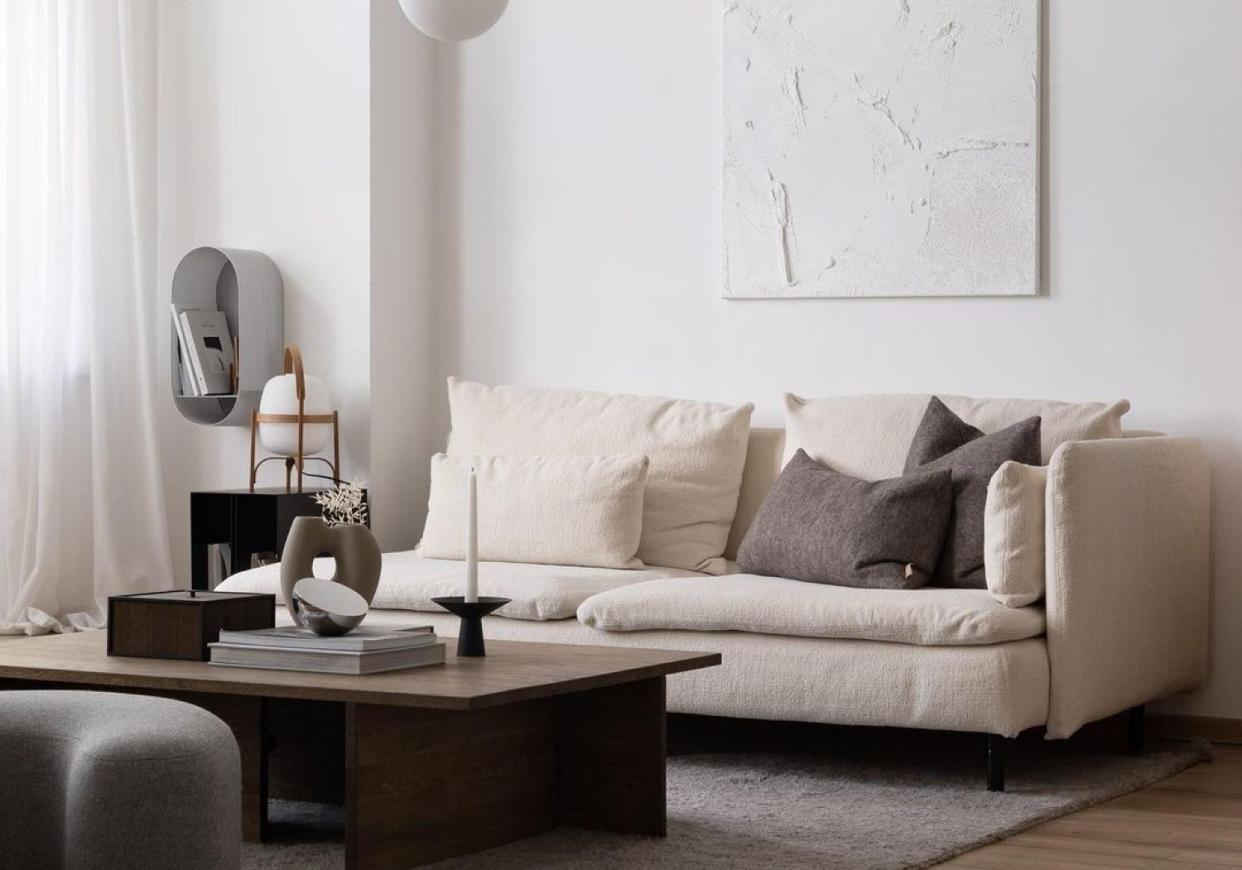
@the.aesthetic.eye / Instagram
If you haven’t come across the term Japandi yet, chances are you’ve seen this interior aesthetic all over social media. Japandi is best described as a blend of Japanese and Scandinavian interiors where Japanese minimalism is mixed with Scandinavian warmth.
The Japandi aesthetic focuses on simplicity with plenty of warmth and comfort. Clean lines, natural materials, neutral colors, and sustainability are the key elements of this style. The result is a calm and soothing space that is both aesthetically pleasing as well as highly functional.
If you're looking to add a bit of Japandi flair to your home, take a look at some of our favorite Japandi living rooms that will inspire you to create your own soothing sanctuary.
Embrace Minimalism
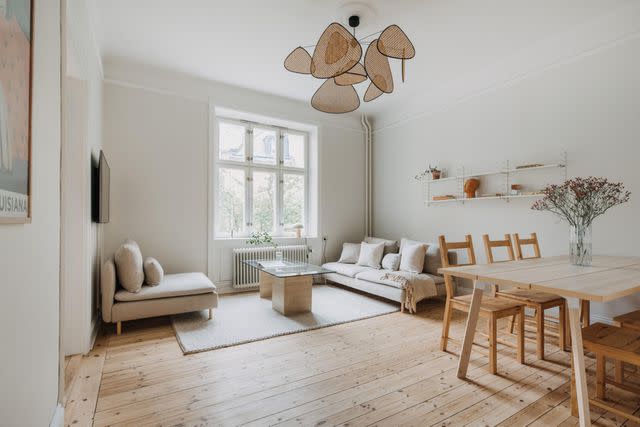
Above all else, Japandi design embraces the minimalist aesthetic. That doesn’t mean that Japandi interiors are bare or clinical. Instead, the focus is on clean lines, functional design and a clutter-free environment.
This warm minimalist living room by Fantastic Frank embraces the Japandi aesthetic perfectly. It has everything you need for a comfortable, practical and aesthetically pleasing space but nothing more.
Choose Neutral Tones
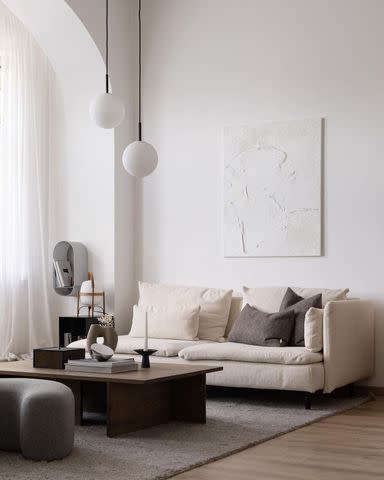
@the.aesthetic.eye / Instagram
Japandi interiors always feature neutral colors as the dominating shades in a room much like this cream, white, and grey living room by the.aesthetic.eye.
Colors like whites, creams, soft beiges, and pale greys are used in abundance to create a calm and soothing space.
Use Wood in Abundance

Not only is wood a natural material which is a key element of Japandi decor, but it also adds warmth and softness to an interior.
This Japandi living room by Ecru Studio features lots of wooden furniture which adds a cozy feel to the space. In addition to wooden furniture, Japandi living rooms often have wooden floors and wood slatted walls as well.
Decorate With Sustainable Natural Materials
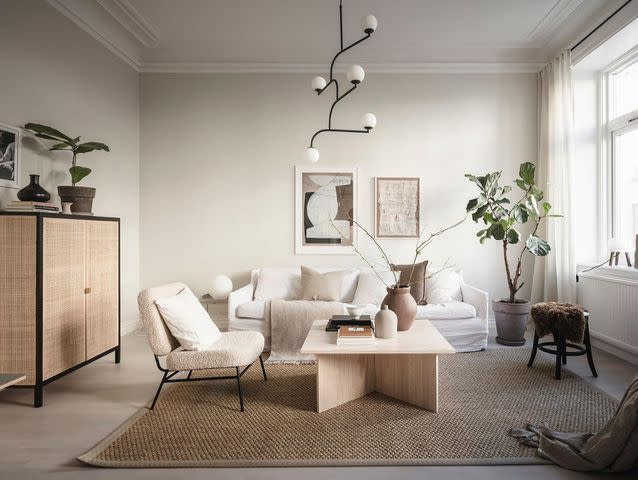
In addition to wood, Japandi interiors have an abundance of natural materials in their decor.
In this living room by Alvhem there's a rattan cabinet, a jute rug, a linen sofa, woolen throws, and more. Other popular materials include bamboo, paper, cotton, stone, and seagrass.
The key is on a combination of neutral-toned, sustainable natural materials that add interest and depth to a room.
Bring the Outdoors In
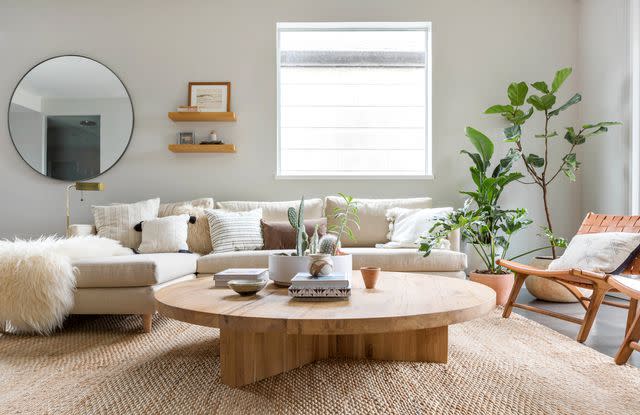
Design by Erin Roberts / Photo by Hyuen Do
The idea of being close to nature is very important in both Scandinavian and Japanese cultures and this is reflected in their interiors too.
This living room by Erin Roberts embraces nature in several ways. There are plants, lots of wooden decor, plenty of natural materials and a hint of earthy colors. Japandi homes typically use this combination to bring the outdoors in.
Opt for Timeless Furniture
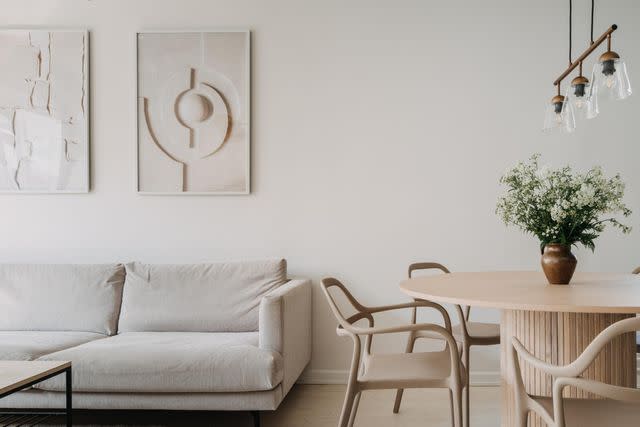
Like many Japandi living rooms, this living area by Fantastic Frank features timeless furniture that won't age quickly.
Popular interior trends or the latest must-have piece of furniture are rarely seen in Japandi homes. Instead, the focus is on simple, ageless furniture and decor that is made to last.
Remove Clutter
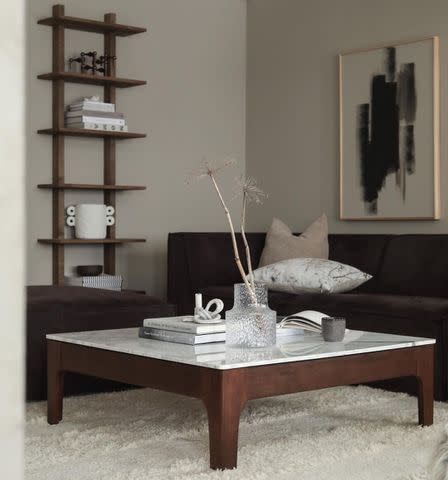
@astridmvie / Instagram
One of the reasons why Japandi interiors look and feel so calm is because of the absence of clutter. While much loved and used decorations are on display, this is done sparingly and with intention like in this living room by astridmve.
Unnecessary extras that simply take up space and add visual clutter will take away from creating a calm space.
Maximize Natural Light
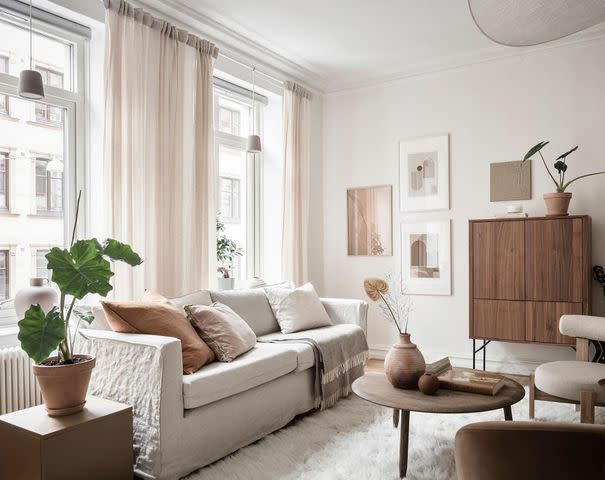
Natural light is all important in Japandi interiors.
This Japandi inspired living room by Alvhem has sheer curtains which provide some privacy while still allowing lots of light in.
If not sheer curtains, Japandi homes also use other see through materials like paper or bamboo that allow light to pass through.
Introduce a Hint of Pattern
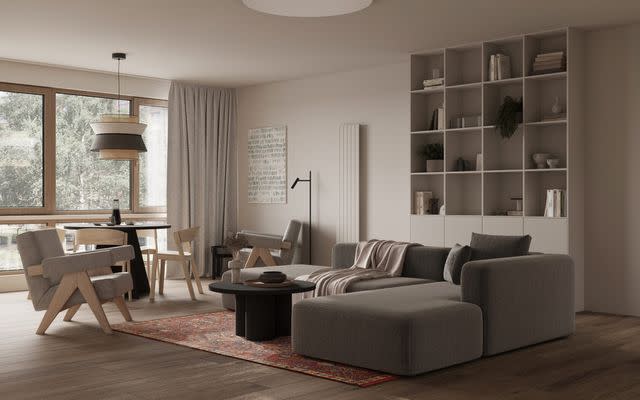
This minimal living room by Ural Interior is pared back in every sense but it includes a patterned rug.
Adding a hint of pattern to a Japandi interior is often done to add interest to a neutral space. Patterned rugs, throws, pillows and artworks are some easy ways to add a patterned element to a Japandi living room.
Use a Mix of Shapes
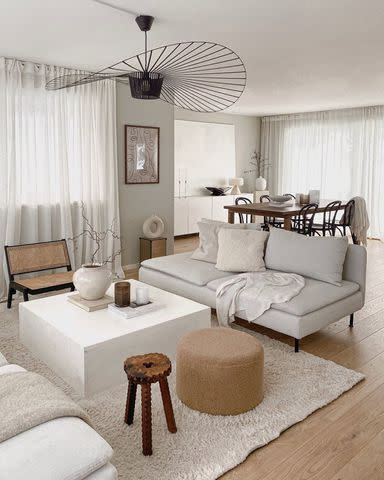
@saratornblad / Instagram
Clean, angular lines are almost always seen in Japandi living rooms but they are softened with curved and rounded shapes.
A square table may be complimented with a round pouf like in this living room by saratornblad. Curved sofas with angular tables are also popular. Often rounded accessories, lighting, and decor accents are also added into the mix.
Contrast Dark With Light
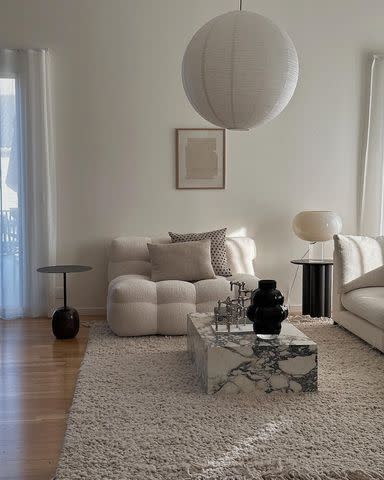
@helenas.hem / Instagram
This white living room by helenas.hem has lots of bold black accents to create contrast and visual interest.
Japandi homes favor a white or pale color palette and to prevent the space from looking flat, dark shades like black, charcoal, and very dark wooden tones are often used as accent colors.
Choose Quality Over Quantity

Both Japanese and Scandinavian designs emphasise quality over quantity.
Choosing two or three good quality pieces of furniture is always preferred over choosing lots of cheaper pieces like in this minimally furnished living room by Ural Interior.
This can also include high quality second-hand pieces or pieces handed down by previous generations.
Use Negative Space
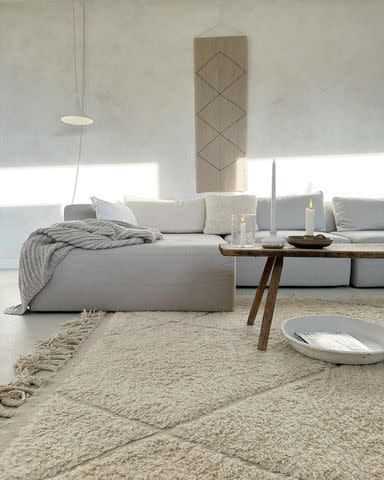
@huizejolie / Instagram
Negative space is the empty space around an object in a room or simply empty floor space. It allows for chosen pieces to stand out as well as allowing breathing space within a room.
This living room by huizejolie embraces this idea perfectly. Each piece is easily visible and there is lots empty space both on the floor and wall.
On a practical level, it gives a room lots of space for free-flowing movement.
Go Dark
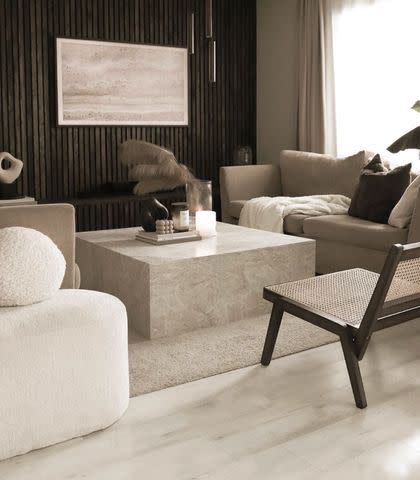
@carolineinterior / Instagram
While Japandi interiors embrace minimalism and neutral tones, they can also be dark and moody. Using very dark woods and dark fabrics like the deep browns used by carolineinterior in her living room, are part of the Japandi look.
Choosing a bright and light or dark and moody look really comes down to personal preference but both work well in a Japandi-inspired space.
Embrace the Idea of Wabi-Sabi
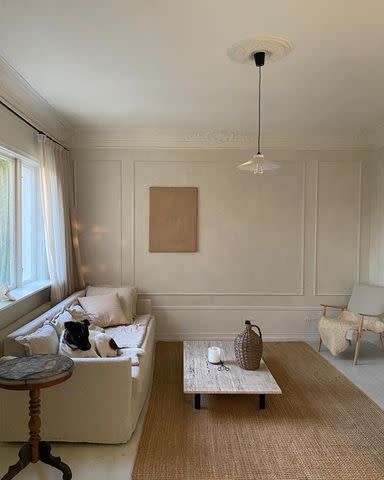
@linapaciello / Instagarm
Wabi-sabi is the Japanese art of finding beauty in imperfection and simplicity.
In interiors this could mean blending rustic and minimalist elements or using raw materials in your decor like in this simple living room by linapaciello. It can also mean embracing the imperfections of your space rather than trying to fight it or cover it up.
Add a Pop of Muted Color
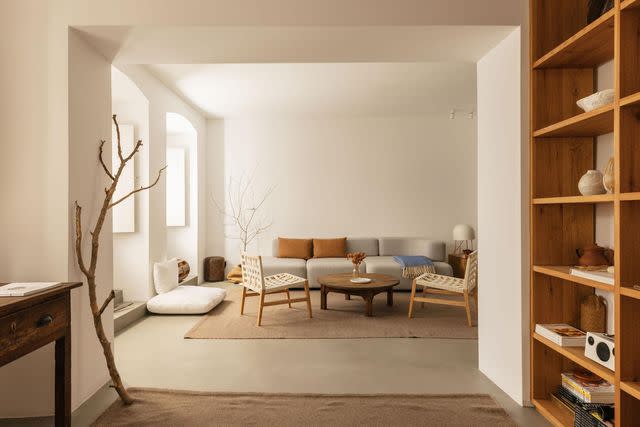
Color is used very sparingly in Japandi interiors but it isn’t off limits. This living room by Fantastic Frank uses hints of rusty brown and a touch of blue.
These two colors along with other earthy tones and greens are some of the most popular shades in Japandi interiors. You might see an artwork or a throw or some cushions in these colors. But as always, less it more in this interior style.
Choose Low Profile Furniture
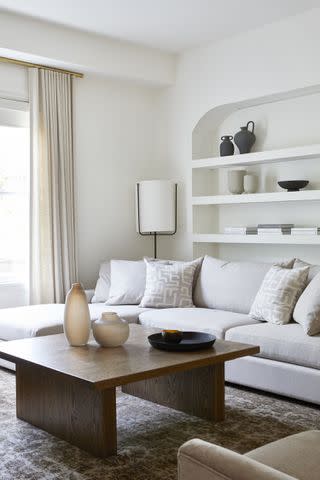
Sitting on the floor is a part of Japanese living as this reflects the importance of being close to nature. When Japanese and Scandi are blended though, this concept is usually expressed with low seating and tables like in the living room above by Charlie Coull Design.
Apart from being closer to the ground, the lower profile also allows for a cleaner, more open space.
Display Abstract Art
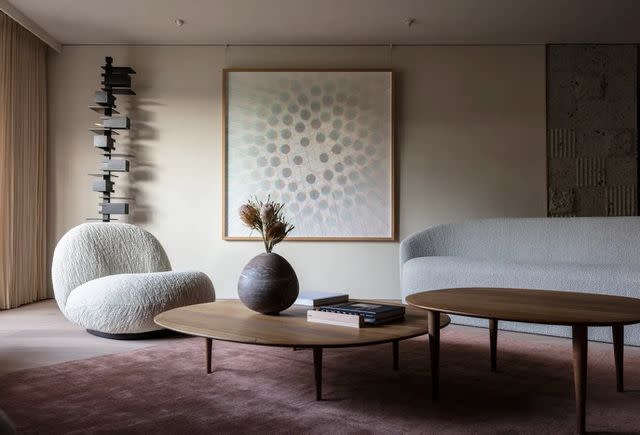
@oeo_studio / Instagram
Abstract, minimalist art in neutral or earthy colors is very much in keeping with the Japandi aesthetic.
This could take the form of one extra-large artwork like in the living room above by Oeo Studio. Alternatively, two or three smaller artworks can also be displayed. As with everything in Japandi homes, less is more so you're unlikely to see a busy gallery wall.
Use Rice Paper Lights
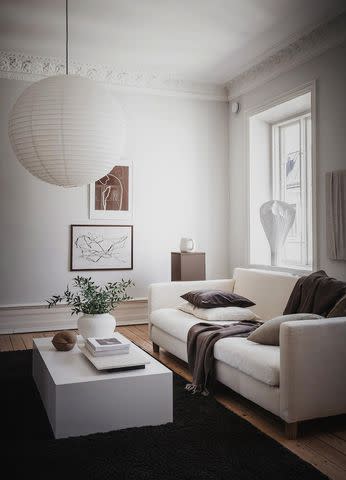
Paper lanterns have been used in Japanese decor for centuries and unsurprisingly they are very much a part of the Japandi aesthetic. In recent years they've been given a Scandi twist with many Scandinavian designers creating modern versions of these lights as seen in this living room by Alvhem.
Whether it's a table lamp, floor lamp, a pendant, or all three, you will often see these lights dotted around Japandi homes in living rooms and beyond.
Incorporate Wooden Slats
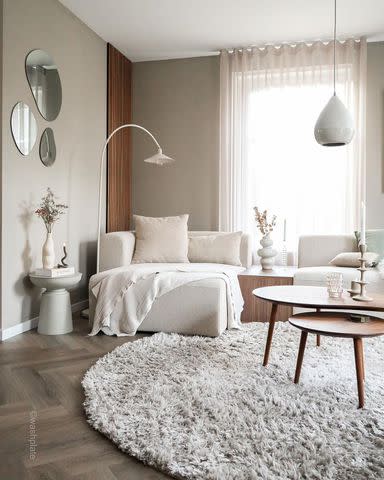
Wood-slatted walls are both functional as well as decorative and add warmth to a pared-back interior. Even a little goes a long way like this living room by washplate.
In Japandi interiors wooden slats are also used as simple space dividers that allow light to pass through from one space to another. It’s another decorative element inspired by nature.
Use Warm Window Coverings
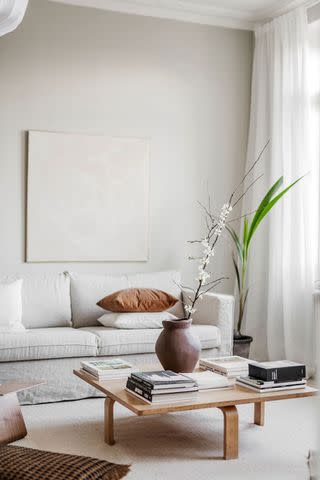
Japanese interiors favor natural window coverings like bamboo or paper blinds while Scandinavian decor often features natural linen curtains like in this living room by Alvhem.
Both of these styles are seen in Japandi interiors as all the materials are natural and have a softness and warmth to them.
Create a Free-Flowing Space
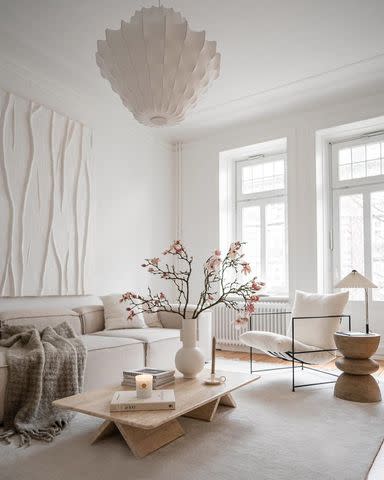
@scandinavian.interior / Instagram
This bright living room by scandinavian.interior feels spacious because there is plenty of space between the furniture as well as empty space. This is typical of Japandi homes where breathing space is a part of every room, no matter how small.
This not only gives a feeling of spaciousness but it’s physically practical as it allows for easy movement in a space. Visually, it creates balance and it means there are no obstructions, allowing the space to feel open and clutter-free.
Add a Textured Rug
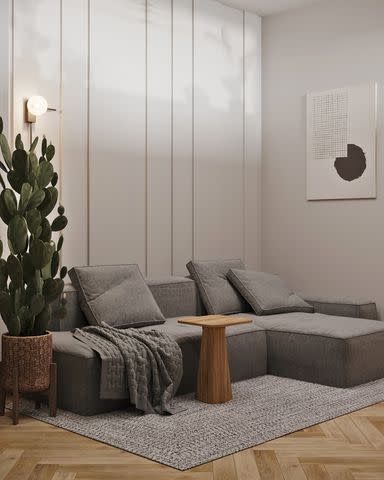
While wooden floors are very much a part of Japandi interiors, they are often paired with soft, textured rugs like in this living room by Ural Interior.
Japandi design is about simple aesthetics without compromising comfort and rugs speak to both these design elements. Natural rugs made of wool, jute or cotton are preferred.
Incorporate Organic Shapes
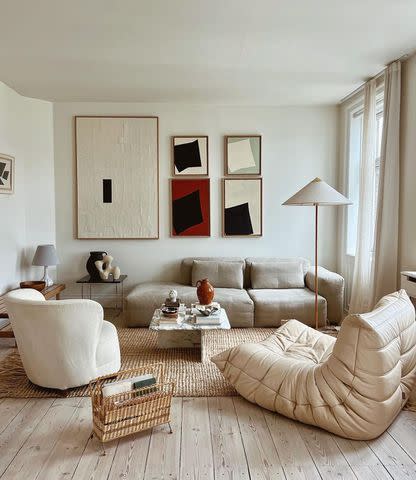
@simonepolk / Instagram
Fluid shapes add softness as well as visual interest which is key in any neutral interior and Japandi interiors are no exception.
Organic shapes like the chair and sculpture seen in Simone Polk's living room are often seen in Japandi homes in the form of mirrors, tables, vases, stools and other decorative items.
Contrast Natural Materials

This living room by Passionshake is decorated with a contrasting mix of materials including a range of fabrics, marble, metal and wood.
While light and dark colors are one way to create contrast in a Japandi home, another effective way to create contrast is by mixing different natural materials.
Mixing smooth and rough textures or warm and cool materials adds depth to a neutral interior.
Decorate With Plants and Flowers
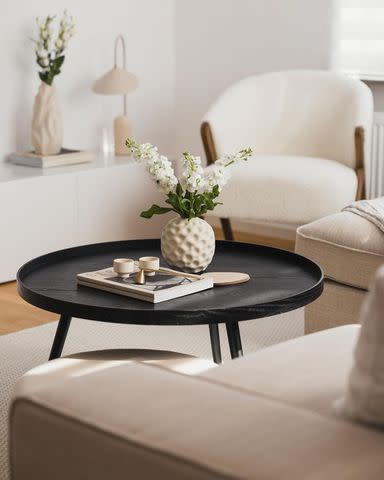
@bythun / Instagram
Plants and flowers add warmth, cheer, and a pop of color to a pared-back interior. That’s why you will almost always see them in a Japandi home even if it's just a few stems like in this living room that belongs to Instagrammer bythun.
This could be a simple foraged branch, some fresh or dried flowers, or lots of greenery. And of course, this is also about being closer to nature which is all important in Japandi decor.
Opt for Layered Lighting
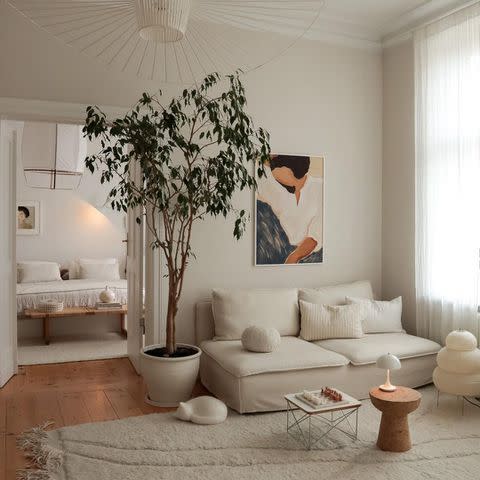
@_katharinamaria / Instagram
Soft lighting is a key feature in both Japanese and Scandinavian interiors as it helps create a warm, calm, and peaceful ambiance.
To create this look, layered lighting is the answer like in this living room by _katharinamaria where she's used a mix of different light sources. Here you have a pendant light as well as floor and table lamps.
Use Woven Materials
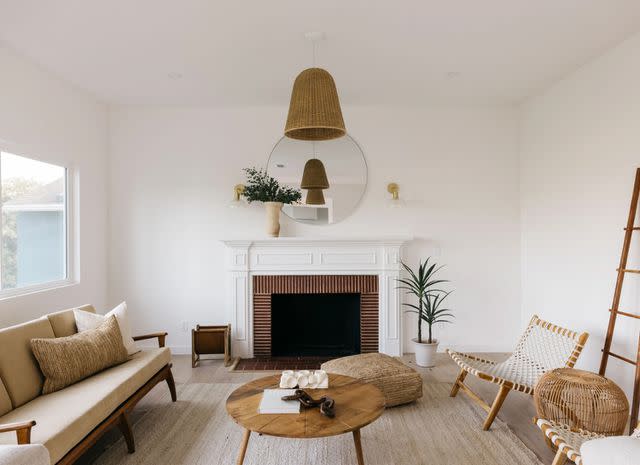
Japandi interiors often feature a mix of handmade woven materials including rattan, seagrass, jute and bamboo like in this living room by The Home Consultants.
These materials once again add warmth to a space while still being simple enough for the pared back aesthetic.
Add All the Comfort
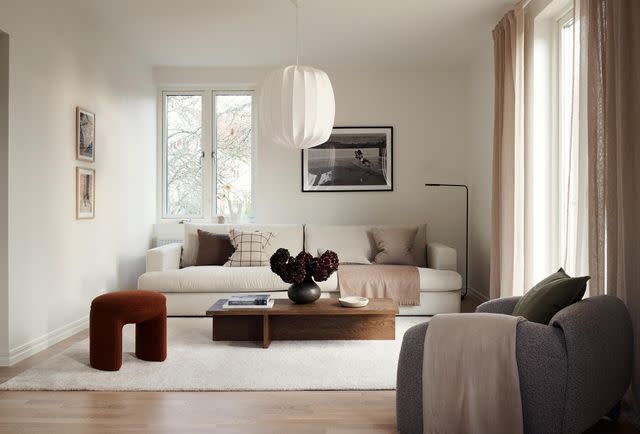
Comfy seating, soft blankets, fluffy cushions and a warm rug make this living room by Fantastic Frank so inviting. While simple and minimal, Japandi interiors never compromise on comfort.
Mix Different Wood Tones
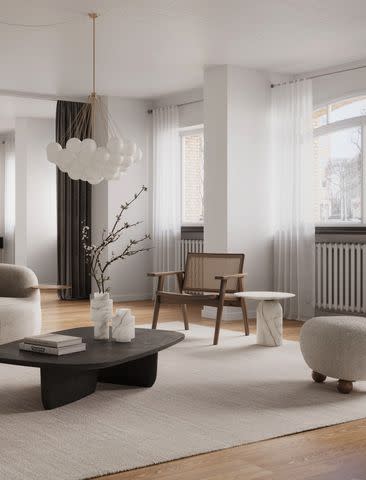
Wood plays a big part in Japandi decor and when used in abundance, different shades of wood are used.
This living room from Fantastic Frank has a medium-toned wooden floor, a nearly-black wooden coffee table, and some dark wooden furniture.
Exercise Restraint
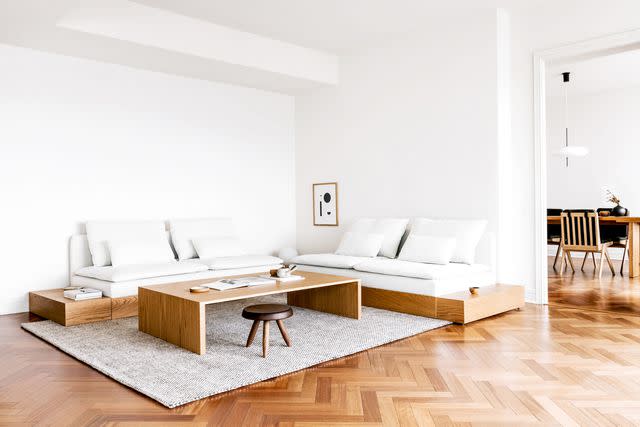
Designed by Erin Roberts / Photo by Margaret Austin
Japandi interiors are always calm and pleasing to the eye like this bright white and wood living room by Erin Roberts. Japandi spaces are all about having just enough for an interesting and comfortable space and nothing more.
Achieving this look does require some amount of restraint so following the less is more philosophy will help.
Keep It Simple
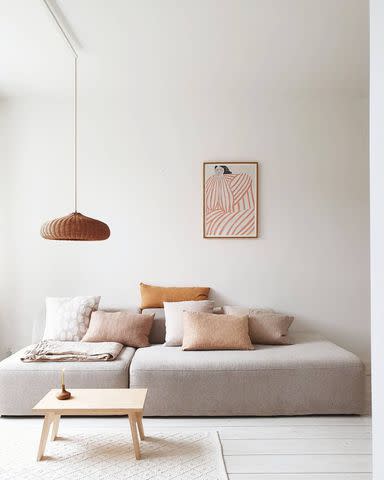
@mamoesjka_nl / Instagram
Simplicity is at the core of Japandi interior design. It is the thread that runs through all Japandi homes. Simplicity is seen in furniture choices, in artworks, in decorations, and in color choices. But simple never means boring.
This living room by mamoesjka_nl is a great example of a simple space that has been minimally furnished yet is anything but boring.
FAQ's
What are the main features of Japandi style?
Japandi style blends Japanese minimalism with Scandinavian hygge, loosely translated as a feeling of warmth and comfort. The focus is on simplicity without compromising comfort and functionality. Neutral colors, natural materials, sustainability and a ‘less is more’ approach are the key elements of this style.
What are the best colors to use for Japandi style?
Japandi interiors lean heavily on neutral tones like whites, beiges and greys. This includes dark versions of these neutral colors as you often see dark accents in black and brown shades.
Wooden decor is used in abundance in Japandi homes and this can range from the palest woods to the darkest and everything in between .
What accent colors can be used in Japandi style?
While neutrals dominate, you will often see colors inspired by nature such as earthy tones, blues and greens. These colors are used sparingly and are almost always saturated or muted versions rather than being bright.
Using plants and flowers in a range of colors is also a part of the Japandi aesthetic and is another way to add a small pop of color to a space.
Read the original article on The Spruce.

